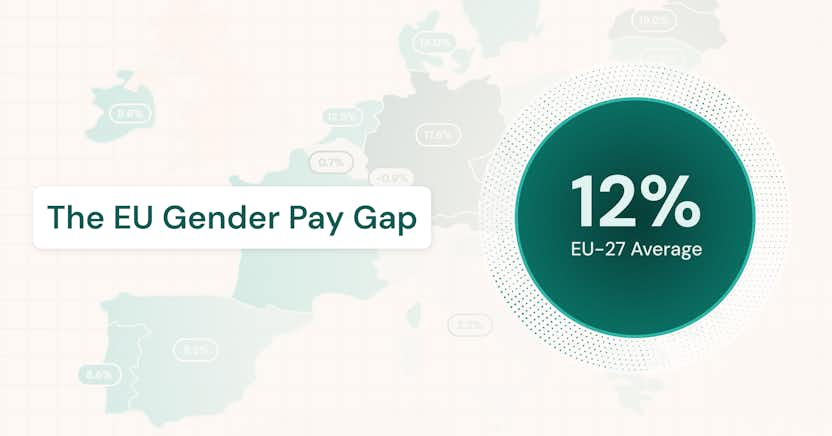Complying With the SEC Pay vs. Performance Disclosure Rules

Learn more about the following beqom products
Pay-for-performance is not just a good idea, since 2022 it’s the law. At least, disclosing how well you do it is. On August 25th, 2022, the US Securities and Exchange Commission (SEC) amended its rules to require companies to disclose information reflecting the relationship between executive compensation and the company’s financial performance. How's it going so far?
According to law firm White & Case, the new rules represented “the most fundamental change to the executive compensation rules since 2006.” Companies had to begin to comply with the new disclosure requirements in filings for fiscal years ending on or after December 16th, 2022.
How have the new pay-versus-performance disclosure provisions affected companies so far? What does it mean for employers and compensation teams trying to comply?
Old idea, new requirements
Reporting on executive compensation is nothing new. Existing regulations (Item 402 of SEC Regulation S-K) require companies to disclose the compensation of their named executive officers (NEOs) and directors. In 2006 the SEC updated its disclosure rules, requiring companies to include a compensation discussion and analysis (CD&A) section in their filings, along with data tables and discussions regarding the compensation of executives, directors, and employees.
The 2022 rules on pay-versus-performance disclosure have been a long time coming. They represent the implementation of a requirement first mandated by the Dodd-Frank Wall Street Reform and Consumer Protection Act of 2010 (Dodd-Frank Act), and were first proposed in 2015, with a final review period that commenced in January 2022.
Transparency and traceability
Like many SEC rules, the goal is to provide stakeholders with transparency and its companion, traceability. Transparency is a key element of any compliance reporting, to aid both investors and auditors. Investors want to understand whether a company is well-managed. Auditors need to be able to see exactly where the numbers come from and how they are calculated.
Compensation teams are already familiar with SEC disclosure mandates, such as the requirement to report the median annual total compensation of all employees other than the chief executive officer (CEO), the CEO's total annual compensation, and the ratio between the two (pay ratio disclosure).
Those disclosures provide visibility that can help evaluate pay fairness or flag exorbitant CEO compensation. The new rules attempt to shine a light on pay effectiveness. While most companies already look at pay-for-performance in some fashion, the new rules require using a prescribed approach to that measurement which involves gathering and manipulating lots of data and presenting the information in a standardized tabular format.
The new disclosures will give investors an objective measure of the relationship between executive pay and company results, providing a metric that can be used to compare companies and to help evaluate the effectiveness of executive pay packages.
More requirements mean more data, time, and cost
What’s the upshot for compensation teams who are tasked with compliance? It means collecting and analyzing mounds of compensation and performance data, performing calculations, and being able to present the information in a clear and traceable way.
To fulfill the requirements means being able to report five years of executive compensation actually paid (CAP) along with company performance details (only three years of data during the initial transition period). “Compensation actually paid” is calculated through a complex formula that looks at not just total compensation as reported on the Summary Compensation Table (SCT), but also must include a host of adjustments for pension benefits, equity awards, options, and other earnings.
You also need to calculate the average compensation paid to all NEOs, regardless of whether their pay is linked to performance.
Measuring performance is an art unto itself, consisting of a variety of metrics like total shareholder return (TSR), peer group TSR, net income, and at least one company-selected measure defined as the most important financial performance measure not otherwise required to be disclosed in the table that links the CAP numbers to the company’s performance.
Compliance can be costly and time-consuming, as it requires assembling, tagging, and manipulating a lot of data and then producing reports that not only must be accurate and precisely formatted but traceable back to the source data.
Failure to comply adds another dimension of risk, as it can have legal consequences and impact shareholder confidence in company transparency and reporting.
First-year learnings
So, given that the goal of the pay-vs-performance disclosure is to provide shareholders with a basis for evaluating executive pay—i.e. whether companies are performing well and therefore whether executives are producing results that justify their compensation—is it working?
The jury may still be out on that. Mainly companies have just been working to comply with the regulations and produce the required financial statements. There is no indication that companies are revamping executive compensation plans as a result of the newly required disclosures.
In the first year, companies certainly were challenged to calculate total compensation in the summary compensation table (SCT) vs. compensation actually paid (CAP). The CAP calculation is different from what many companies have been voluntarily reporting as "realizable" compensation, as it does not correlate to the total amount of cash or equity compensation that the executive realized during the year.
Perhaps one effect is bringing more focus onto equity compensation for NEOs. While there may be value in that, one criticism is that it puts more weight on the market value of the stock, which can be affected by outside factors such as the overall economy, Federal Reserve policies, political winds, pandemics, and other factors over which executives have no control. One has to be careful in using stock price as a proxy measure for executive performance.
The first year has given companies a chance to work out their performance metrics and compensation calculations, and so may set the stage for easier reporting in future years. And, the new disclosures may bring pay-for-performance more to top-of-mind, and give shareholders another prism through which to view executive compensation.
What it means for employers
The SEC's amendment requiring companies to disclose information on the relationship between executive compensation and the company's financial performance is likely to have several implications for employers in the coming years, including:
Increased transparency: Employers will need to provide clear and comprehensive information regarding how executive compensation aligns with the company's financial performance. This transparency could lead to greater accountability and scrutiny from shareholders and the public.
Enhanced governance practices: Employers may need to reassess their governance structures and compensation policies to ensure they are in line with shareholder interests and regulatory requirements. This could involve reevaluating executive pay packages and tying them more closely to performance metrics.
Impact on executive compensation practices: Employers may adjust their executive compensation practices to better reflect company performance. This could involve implementing performance-based incentives, such as stock options or bonuses tied to specific financial targets.
Potential for shareholder activism: Shareholders may use the disclosed information to advocate for changes in executive compensation practices if they believe that pay is not adequately tied to performance or if there are discrepancies between executive pay and company performance.
Legal and compliance considerations: Employers will need to ensure that they accurately disclose the required information in accordance with SEC regulations to avoid potential legal and regulatory penalties.
Overall, the requirement—imperfect though it may be—is likely to lead to greater transparency and accountability in executive compensation practices, as well as potentially influencing governance, compensation structures, and shareholder activism within companies. It may also affect how companies define and measure performance.
How to take the pain and cost out of compliance
To ensure accuracy, efficiency, transparency, and overall reduced risk requires a centralized, rules-based compensation planning tool, as found in a compensation management software platform, including pay equity software.
A compensation platform provides a central location to store all the related data, yielding one consistent version of the truth that is transparent and traceable, and readily available for reporting and analysis. A system should further be able to import and store whatever compensation or performance data is not already housed in the system but may be needed for calculations or reporting.
A compensation system like beqom not only provides the needed transparency and reporting, but provides a full audit trail of compensation decisions and approvals.
To find out how a dedicated compensation platform can facilitate compliance while improving your compensation administration efficiency and reducing costs, contact the compensation experts at beqom.








